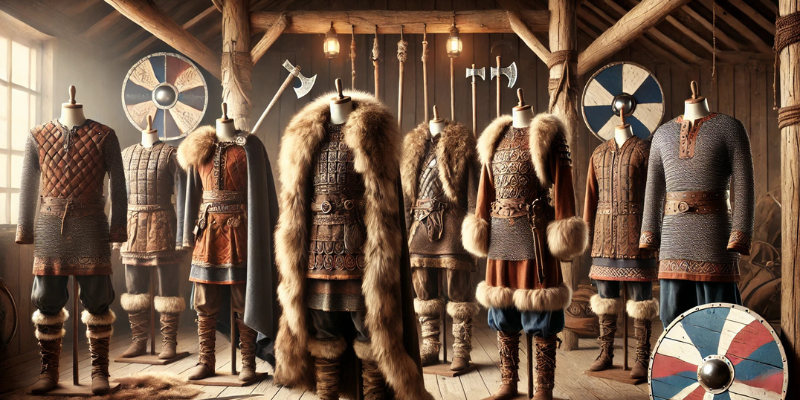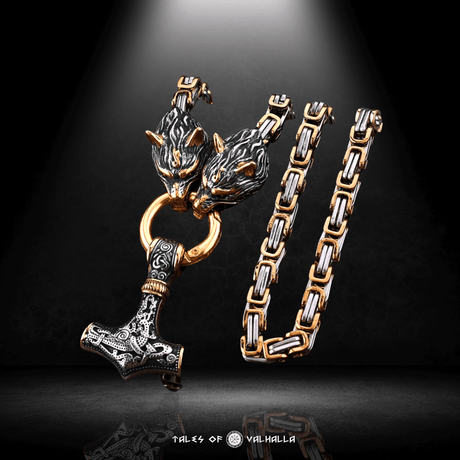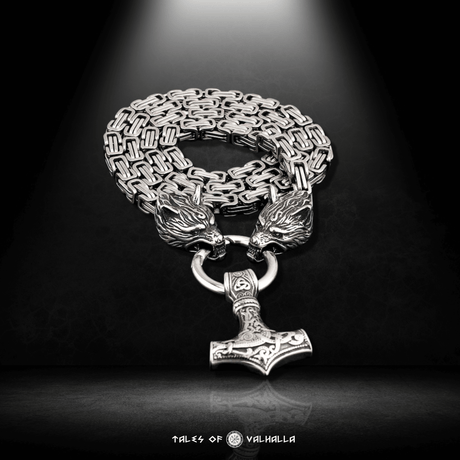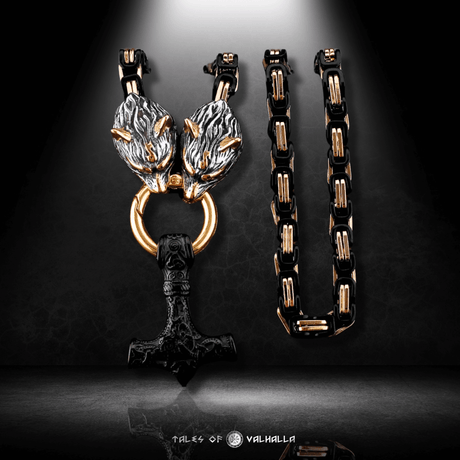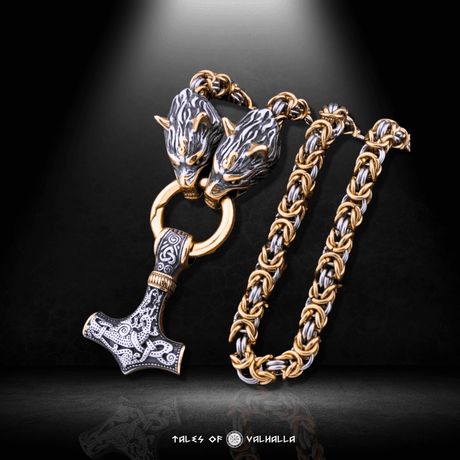The Viking Age, which stretched from around 793 to 1066 AD, has left an undeniable impact on modern culture. From tales of fearless warriors to the rich mythology of the Norse gods, the legacy of the Vikings has captured the imagination of millions. Today, Viking culture continues to inspire, especially in the world of cosplay, Halloween costumes, reenactments, and festivals. But to truly capture the essence of the Viking warrior or shieldmaiden, you need to dive into the details of Viking costumes and warrior outfits.
In this comprehensive guide, we will explore everything you need to know to create your own Viking costume that will make you look and feel like a true Norse warrior. Whether you’re aiming for an authentic, historically accurate costume or something more stylized and imaginative, you’ll find valuable tips and insights here. From essential garments like tunics and cloaks to Viking weapons like swords and axes, we’ll break down the components of a great Viking costume.
The Allure of Viking Costumes and Warrior Outfits
The world of cosplay and historical reenactment is booming, and Viking costumes are at the heart of this cultural resurgence. Whether you’ve been inspired by TV shows like Vikings or The Last Kingdom, or you’re drawn to Norse mythology, Viking attire offers a powerful blend of ruggedness and mysticism. There’s a distinct appeal to stepping into the shoes of a Viking warrior, donning the armor and weapons that made them legendary.
Creating the perfect warrior outfit requires attention to detail and an understanding of Viking fashion, weaponry, and culture. A Viking costume isn't just about looking fierce—it’s about embracing the history and symbolism of a people whose warriors, explorers, and traders made a lasting mark on the world.
The Foundation of Viking Clothing: Tunics and Trousers
The Viking Tunic: A Staple of Norse Fashion
The Viking tunic was one of the most important pieces of clothing in any Viking costume, especially for men. Made from wool or linen, depending on the season, tunics were worn by all members of Viking society, from the wealthiest chieftains to the simplest farmers. A Viking tunic was usually a simple T-shaped garment, extending to the knees, with long sleeves and a straight cut.
For your Viking costume, you’ll want to focus on using natural fibers like wool, linen, or cotton. These materials mimic the texture and feel of the clothing worn during the Viking Age. Earthy tones such as browns, greens, greys, and blues were common in Viking attire because of the natural dyes they used from plants and minerals. Avoid synthetic fabrics and bright, artificial colors if you want an authentic Viking costume.

The Viking Tunic
Layering for the Cold
Vikings were adept at dressing for the cold climate of Scandinavia, and layering was essential. Over the tunic, they often wore cloaks, capes, or fur garments for extra warmth. The key to creating an authentic male Viking costume is layering these garments to achieve a look that is practical, rugged, and visually striking. Adding fur, a cloak, or even a leather vest can give your outfit more dimension and authenticity.
Viking Trousers and Leg Wraps
Viking men paired their tunics with trousers or leggings. These trousers were typically loose-fitting and made from wool or linen, just like the tunics. Viking trousers were secured with a belt and sometimes tucked into boots. For your warrior outfit, you’ll want to choose materials that provide both comfort and flexibility.
One unique feature of Viking clothing was the use of leg wraps, known as “puttees.” These woolen strips were wrapped around the lower leg to provide warmth and support during long journeys or battles. Leg wraps are an important element to consider when creating an authentic male Viking costume, as they give your costume an extra level of historical accuracy.
Viking Armor: Leather, Shields, and Helmets
Viking Armor for Protection and Prestige
Viking armor was designed to protect warriors in battle while allowing them to remain mobile and agile. The most common form of armor worn by Vikings was a leather jerkin, often reinforced with metal studs or chainmail. Leather armor was favored because it provided protection without the weight of full metal armor, making it ideal for swift raids.
For your warrior costume, leather or faux leather armor can be used to create a more formidable look. You can add metal studs or chainmail elements for extra detail, but be mindful of comfort if you’ll be wearing the costume for extended periods.
The Viking Shield: A Warrior’s Best Defense
The Viking shield was an iconic piece of their armor, both functional and symbolic. Viking shields were typically round, made from wood, and reinforced with a metal boss in the center. These shields were large enough to provide protection in battle, but light enough to be wielded with agility.

The Viking Shield: A Warrior’s Best Defense
In Norse culture, shields were more than just a defense mechanism—they were often painted with intricate designs and symbols representing protection, the gods, or family crests. For your Viking costume, consider purchasing or making a lightweight foam or plastic shield. Many costume shops offer shields with Norse designs, or you can customize your own with paint and runic symbols.
- See more: Authentic Woman Viking Clothing
Viking Weapons: Swords, Axes, and Spears
Viking Swords: The Weapon of the Elite
Viking swords were the most prized weapons of Norse warriors. These double-edged blades, often 35 inches long, were status symbols as much as they were tools of war. Viking swords featured intricate designs on the hilt and were passed down from generation to generation.
For an authentic male Viking costume, a Viking sword adds an essential touch. Look for foam or plastic replicas for safety, especially if you’re attending conventions or cosplay events. A sword with a decorated hilt or Norse designs will make your warrior outfit look more authentic.

Viking Swords: The Weapon of the Elite
Viking Axes: The Classic Viking Weapon
The Viking axe is arguably the most iconic weapon associated with Norse warriors. Unlike swords, axes were widely available to all Viking warriors, as they were tools used for everyday tasks as well as battle. The Viking axe came in many forms, from small one-handed axes to the massive two-handed Dane axes.
Incorporating an axe into your warrior costume is a must if you want a classic Viking look. Foam or plastic axes are ideal for safety, especially if you’ll be carrying the weapon at a festival or cosplay event. Large, two-handed axes are particularly impressive and can give your costume a dramatic edge.

Viking Axes: The Classic Viking Weapon
Authentic Female Viking Costumes: Celebrating the Shieldmaidens
The image of Viking women has evolved in recent years, especially with the portrayal of shieldmaidens in shows like Vikings. While the historical accuracy of female warriors in Viking society is debated, there is no doubt that authentic female Viking costumes are a popular and powerful choice for cosplay and reenactment.
The Viking Apron Dress: A Historical Staple
Viking women typically wore long underdresses made of wool or linen, over which they layered an apron dress. This garment, called a “smokkr,” was fastened with brooches at the shoulders and often decorated with beads or jewelry. For an authentic female Viking costume, start with a linen underdress and layer the apron dress on top.
The brooches and jewelry worn by Viking women were often status symbols, and they can add an extra level of detail to your costume. Look for bronze or silver brooches with Viking designs, and don’t forget to add strings of glass or amber beads.
Armor for a Shieldmaiden Look
If you want to portray a warrior woman, consider adding armor elements to your authentic female Viking costume. Leather bracers, chainmail, and a small shield will help you channel the fierce spirit of a Viking shieldmaiden. Pair your armor with a sword or axe for the full warrior look.
Viking Hairstyles and Accessories
Viking women often wore their hair in intricate braids, and this can be a key part of your Viking costume. Consider adding hair beads or clips made from bone or metal for extra detail. Additionally, you can accessorize your costume with belts, pouches, and a cloak to complete the look.
Viking Costumes for Modern Events: Halloween, Cosplay, and Reenactments
Viking Halloween Costumes
Halloween is the perfect time to don a Viking costume and embody the fierce spirit of Norse warriors. Viking Halloween costumes are always a popular choice, offering a balance of historical authenticity and dramatic flair. You can create a DIY Viking costume by starting with a basic tunic and adding accessories like armor, a helmet, and a weapon.
Many costume shops offer pre-made Viking Halloween costumes, but with a few simple additions, you can make your outfit stand out. Adding a fur cloak, customizing your shield, or painting Norse designs onto your weapons can give your costume a unique touch.

Viking Halloween Costumes
Cosplay and Conventions
Viking costumes are also a great choice for cosplay events. Whether you’re attending a fantasy convention or a historical reenactment, Viking costumes allow you to embrace both the history and mythology of the Viking Age. Warrior outfits are especially popular at conventions where fans of shows like Vikings gather.
For cosplay, consider customizing your costume to represent a specific character from Norse mythology or Viking history. For example, you could portray Thor with his hammer, Mjolnir, or embody a character like Lagertha from Vikings.
Final Tips for Creating Realistic Viking Costumes
Materials Matter
When creating a realistic Viking costume, your choice of material is key. Stick to natural fabrics like wool, linen, and leather to create a more authentic look. Avoid shiny or synthetic fabrics, as they can detract from the historical feel of your costume.

Materials Matter
Focus on Accessories
Accessories are essential to making your Viking costume look realistic. Brooches, belts, beads, and fur cloaks all add layers of detail that can elevate your outfit. A well-made helmet, shield, or weapon can also take your costume to the next level.
Comfort and Practicality
While it’s important to make your costume look visually impressive, comfort is also essential. Make sure your Viking costume allows you to move freely, especially if you’ll be wearing it for long periods at an event or festival. Choose lightweight weapons and shields to avoid fatigue, and consider breathable fabrics if you’ll be outdoors.

